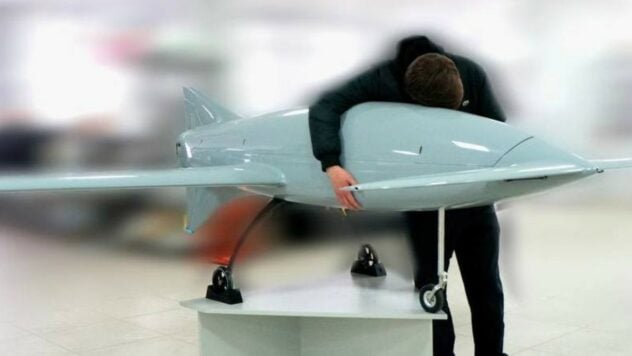
The day before, a special forces soldier of the Main Intelligence Directorate of the Ministry of Defense of Ukraine with the call sign Kolibri showed the Ukrainian loitering ammunition Bober.
This kamikaze drone looks like a small plane with two pairs of wings, has a low speed, but can fly, according to various sources, 800 – 1,000 km.
It was these drones that ended up in the Russian plant for the production of electronics for missiles of the Kh-31, Kh-35 and Kh-59 types, as well as in the storage facility where missile parts for ballistic missile systems were located. UAVs have caused losses to the occupiers of more than tens of millions of dollars.
Currently watching
Facts ICTV asked what kind of Ukrainian drone Bober is.
Characteristics of the Beaver
It is known that during flight, a drone can change altitude, and this helps to overcome enemy air defense zones.
Preliminary technical specifications (data not officially announced):
- wingspan – about 2.5 m,
- drone length – 2 – 2.5 m,
- speed – about 150 – 200 km/h.
There is an assumption that its weight is approximately 150 kg, and its warhead is 20 kg. The cost of the drone is more than 100 thousand dollars.
Beavers are very similar to Iranian Shahed UAVs. However, the smaller Shahed-131 carries 15 kg of explosives and has an operational range of 900 km. The larger Shahed-136 can fly up to 2,000 km and carry a 40-50 kg warhead.
Want to rest? Come to Facti.GAMES!
What the experts say
In a commentary to Facts ICTV , aviation expert, leading researcher at the State Aviation Museum of the National Aviation University, candidate of historical sciences Valery Romanenko said that in the context of our development of military drones, the Bavovna.ai project, which is working on navigation systems for UAVs, deserves special attention.
According to him, inertial navigation using artificial intelligence makes it possible to overcome the enemy’s radio interference system.
“It is very important for our drones to successfully fly through the 60-kilometer dense band of radio interference on Russian territory. Already behind it, drones can easily follow to their target, the expert notes.
The important thing is that all the critical factories of the Russian military-industrial complex are located within a radius of up to 1,100 km, and this is where our drones should fly, says Valery Romanenko.
According to British drone expert Steve Wright, although the Beaver's speed is relatively slow, it is stable, and the emphasis here is on range.
Analysts say the Beaver UAV is powered by an internal combustion engine, equipped with a propeller and landing gear, indicating that it is launched into the air from asphalt. There is no information on how Beaver drones are able to bypass electronic interference, because the Iranian Shahed has several types of navigation, which makes its jamming less effective.
Drone attacks on Moscow
In the summer, the American publication Newsweek wrote that Ukraine could use its new long-range drone for attacks on Russian territory. Open-source intelligence suggests that Ukrainian Bober drones may be behind attacks on the Moscow region and Moscow that the Kremlin blames on Kyiv.
Let us recall that on July 30, several attack UAVs attacked the Moscow City towers, where the office of the Ministry of Digital Development, Communications and Mass Communications is located. Drones damaged the facades of two office towers. Explosions also occurred in Odintsovo and Krasnogorsk.
The Russian Ministry of Defense then stated that Russian air defense allegedly shot down a Ukrainian UAV in the Moscow region. Two more drones were suppressed by electronic warfare, lost control and fell on the territory of Moscow City.
On the morning of November 14 it was very noisy in Kolomna near Moscow. According to unverified information, the target could presumably be the Mechanical Engineering Design Bureau, where missiles are developed, in particular Kinzhal and Iskander.
British expert Steve Wright believes that in the future Ukraine may use Beaver unmanned aerial vehicles in swarms, so it will be easier for them to overcome air defense and electronic warfare systems. The Russians use the same tactics when they launch missiles across Ukraine.
On November 11, the Minister for Strategic Industries of Ukraine Alexander Kamyshin said that we are mass-producing an analogue of the large Iranian Shahed-136 drone. According to him, our drones are already working at the front, the military just doesn’t talk about it officially. Kamyshin also assured that the characteristics of our UAV are better than Shahed.
On October 25, it was reported that the Ministry of Defense had approved several new UAV models for operation. In general, Ukraine plans to produce tens of thousands of drones every month by the end of this year.

